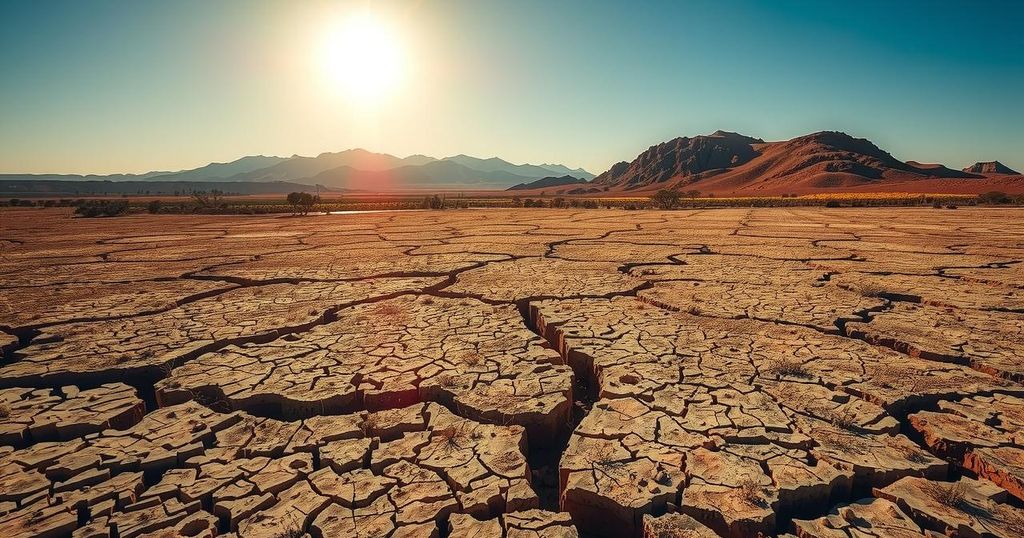Climate change
AFRICA, AIRNOW, ASIA, AUSTRALIA, BAHAMAS, BANGLADESH, BARBADOS, BY, BYRNIHAT, CHAD, CHESTER - SCHROEDER, CHRISTI CHESTER - SCHROEDER, CLIMATE, CLIMATE CHANGE, COVID-19 IMPACT, CUBA, DATA ANALYSIS, DEMOCRATIC REPUBLIC OF CONGO, ECONOMIC IMPACT, ESTONIA, EUROPE, GRENADA, ICELAND, INDIA, INDONESIA, IQAIR, NEW ZEALAND, NORTH AMERICA, OCEANIA, PAKISTAN, ROHINGYA, SAHARA, SINGAPORE, STATE DEPARTMENT, UN, UN MIGRATION AGENCY, UNITED STATES, US, WHO, WORLD HEALTH ORGANIZATION
Jamal Walker
0 Comments
Global Air Quality Crisis: Limited Compliance with WHO Standards and US Program Closure
In 2023, only seven countries met WHO air quality standards. Chad and Bangladesh recorded the highest pollution levels, while the US discontinued its global air quality monitoring program, complicating efforts to track air quality in developing nations. This change may lead to increased pollution and health risks in those regions.
In 2023, the World Health Organization (WHO) reported that only seven countries met its air quality standards as pollution levels continued to escalate. Researchers indicated that the challenge of combating smog would become more difficult following the discontinuation of the United States’ global monitoring program.
Chad and Bangladesh emerged as the most polluted countries globally, with smog levels exceeding WHO recommendations by over 15 times, according to data from Swiss air quality firm IQAir. Only Australia, New Zealand, the Bahamas, Barbados, Grenada, Estonia, and Iceland achieved acceptable air quality levels in 2023.
The absence of comprehensive data, particularly in Asia and Africa, poses a significant challenge, as many developing nations depended on air quality measurements from US embassies to monitor pollution. The State Department recently ended this initiative, citing budget cuts, thereby removing over 17 years’ worth of data from its air quality monitoring website, airnow.gov.
Christi Chester-Schroeder, IQAir’s air quality science manager, expressed concern over the impact on Africa, where these monitors often provided the only accessible real-time air quality data. Chad, while omitted from IQAir’s 2023 pollution rankings due to data gaps, remained the most polluted country in 2022, suffering from the effects of Sahara dust and uncontrolled agricultural burning.
The average concentration of hazardous particulate matter (PM2.5) in Chad reached 91.8 micrograms per cubic meter last year, a slight increase from the previous year, significantly above the WHO’s recommended limit of 5 mg/cu m, which was met by only 17% of cities. In contrast, India ranked fifth in pollution, with an average PM2.5 level of 50.6 mg/cu m, also featuring prominently in the top 20 most polluted cities.
Climate change is exacerbating pollution levels, according to Chester-Schroeder, with rising temperatures leading to more severe forest fires in Southeast Asia and South America. Additionally, Christa Hasenkopf from the University of Chicago indicated that at least 34 countries would be deprived of reliable pollution data following the termination of the US air quality monitoring program.
Hasenkopf noted that the US program contributed positively to urban air quality and overall life expectancy, emphasizing that its loss represents a significant setback for global air quality initiatives.
The recent data highlights the severe air pollution crisis, particularly in Chad and Bangladesh, which far exceed WHO standards. The cessation of the US air quality monitoring program creates considerable challenges for developing countries that relied on it for pollution data. These developments underscore the pressing need for effective air quality management and international cooperation to combat health-threatening pollution levels.
Original Source: www.arabnews.com




Post Comment